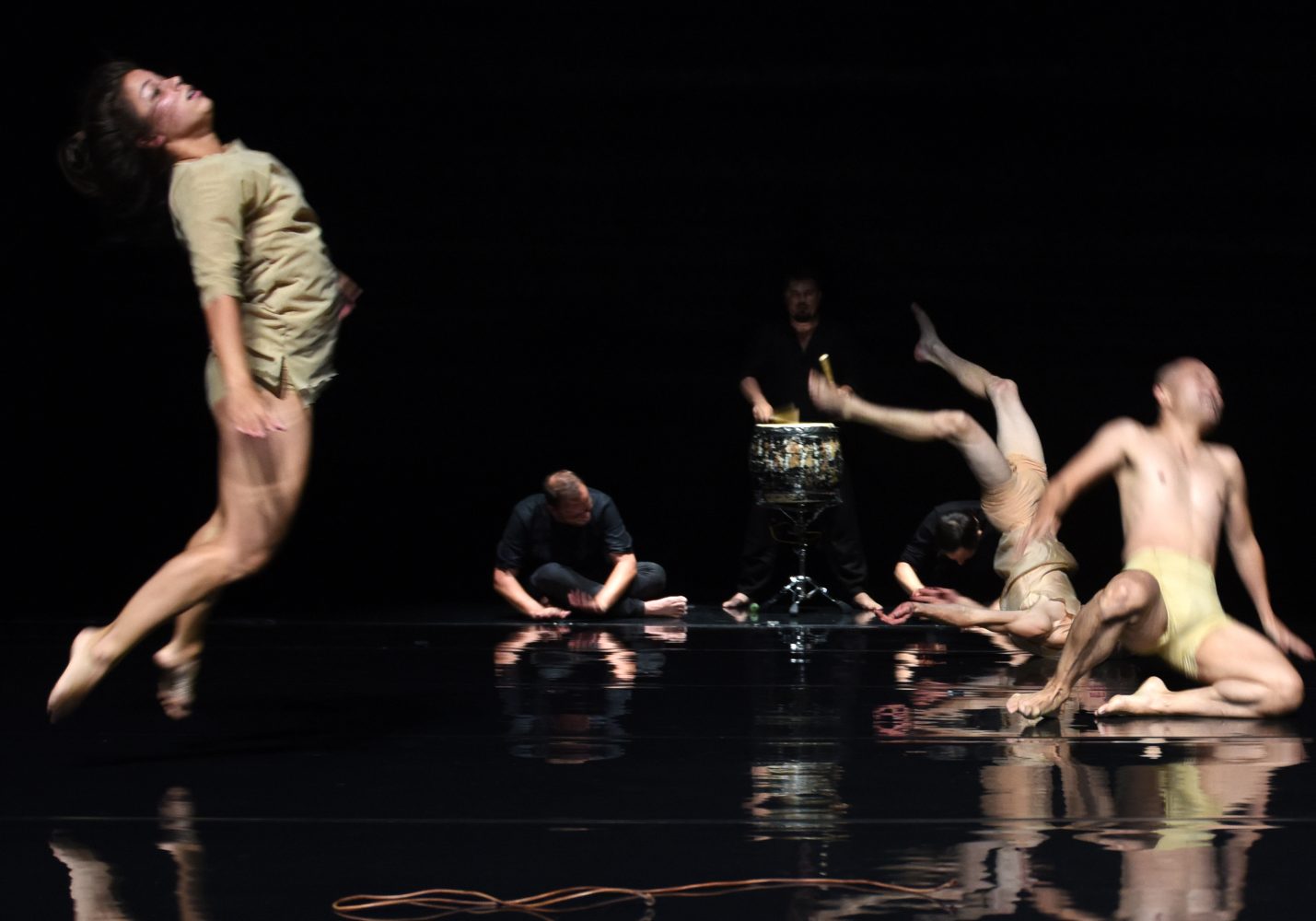Schweigman& is known for its ability to transport visitors into a poetic twilight zone, into extraordinary worlds without words, where the imagination runs riot. Each performance or installation is a rich experience for the body and the senses. What happens if for a moment we stop defining and rationalising, and start doing what our brain does best? If we create space just to look, listen and feel?
The result invariably becomes a collective and personal adventure. Whether the performance is site-specific – on water, between the blades of a windmill, on the edge of the woods – or in an auditorium, the company always manages to touch a universal human string. Chaos makes way for comfort, confrontation, a momentary connection, recognition or spectacular lust for life. Everyone experiences it differently, yet like one journalist once wrote: “even the toughest audience is moved.
even the toughest audience is moved
The Schweigman& method
Over the years, director Boukje Schweigman has developed her own unique phenomenological method in making theatre. This is based on the tradition of abstract mime and like the philosophical strand of phenomenology it places sensory perception at its heart:
“When we create a performance, we start with an in-depth exploration of a phenomenon (ground, rotation, air, the fall), trying it out and seeing what happens in improvisation. Then we take a step back and analyse what the new material evokes for us, what kind of scenes could be developed. We keep repeating this process and so we gradually uncover the heart of the matter, peeling away layer by layer, until we find the story that presents itself and what wisdom we can extract from it.
We are not looking to create miracles, just to open the senses to the miracles that already exist
At the same time, we hone the dramaturgy and look at how we want to convey this experience to the audience. We may not stick to a traditional narrative structure, but we create a dramaturgy of the audience’s experience. Although knowledge can be conveyed through words, wisdom only comes through experience. But to really enable an experience to penetrate, it has to be carefully structured. We’re not looking to make a dramatic ‘experience’, but to create a setting in which the audience can be stimulated by poetic sensations, can feel something moving inside again. We are not looking to create miracles, just to open the senses to the miracles that already exist. And by doing so laying the groundwork for highly personal experiences which often lead to deeply personal thoughts and insights. So many people in the audience, so many stories.”
Schweigman& develops work together with a regular group of partners and associates- likeminded artists and practitioners as Theun Mosk and Cocky Eek – and with various artists, companies and ensembles working in different disciplines – hence the ‘&’. While projects are initially launched by Boukje Schweigman, there is plenty of space in the artistic process for everyone to contribute their expertise. Scenes develop from improvisations by participants. Mime artists like Toon Kuijpers and Ibelisse Guardia have been involved with Schweigman& since the start and have contributed significantly to our particular performance style, which a new generation is now developing further. Esmee Thomassen is our regular costume designer. Composers and musicians pursue their own quest on common themes. Technicians and producers pull out all the stops to achieve the impossible.
Each year Schweigman& creates one new production, either site-specific on location or for the theatres and many of the productions remain available in the repertoire for touring for a few more years.

The body as instrument
Phenomenology is a philosophical movement in which empirical observation – sensory perception – is the central principle. Edmund Husserl and Maurice Merleau Ponty, two of its main protagonists, argue that we can best know the world by connecting with the phenomena through which the world presents itself. Schweigman& employs a similar approach in their performances. Like a scientist using instruments to understand natural phenomena, we use our body as an instrument to delve further into the mystery of existence. Without assumptions or preconceived ideas, we embrace the creative process, curious to see what will emerge. You might say that the body itself is the first, most archetypical phenomenon. It is our body (with its senses, emotions etc) which enables us to live and experience the world.
Alongside producing its own performance work, Schweigman& harbours the ambition to become the centre of expertise and meeting place for the phenomenological creative process within the performing arts. This involves research projects, workshops and lectures, education projects and activities, and a development programme for supporting new makers.
Over the last sixteen years the award-winning Schweigman& has performed across the length and breadth of The Netherlands and at international festivals and venues abroad; in Australia, Belgium, Bolivia, China, Denmark, Germany, England, Iran, Jordan, Lebanon and Switzerland.